The Best Men's Running Shoes 2019

Every runner demands different needs from a pair of running shoes. Perhaps you’re a beginner sticking to your 2019 resolution and training for your first 5K race. Maybe you slacked off for a bit but decided that now’s the time to jump right back into the running game. Or perhaps you’re an experienced veteran who’s pounding the pavement on the regular.
No matter what level you’re at, you’ll need a running shoe that checks all of the boxes—and there are certainly a dizzying number of factors to consider. Price, weight, cushioning, support, durability and overall fit are details that all runners must think about when selecting the perfect pair. And don’t forget about foot size and shape; stabilization, which can help atone for under- or overpronation; and heel drop, which is the how thick the heel is compared to the toe. To save you some time and headache, we did all the research and testing for you.
After consulting with runners, from competitive amateurs to professional marathon runners, three SI staffers set out to find the best running shoes for men. In addition to weighing the above factors, we also took into consideration the look of the shoe because, let’s face it: most guys end up wearing their running shoes for a lot of other things besides running. The running shoes were tested around the streets and parks of New York City, on tracks and on treadmills and in a variety of weather conditions. They also wore them to the gym and for general day-to-day errands and walking.
Whether you’re in search of a fast shoe for race day, something for a longer-mileage training session or a more versatile trainer for all types of runs and workouts, we’ve got you covered. Below, we outlined the newest and best sneakers of 2019, including running shoes from Nike, adidas, New Balance, Brooks and ASICS. For our top pick, we outlined two shoes at different price points that offer similar all-around benefits for many types of runners.
See our comprehensive guide on the best women’s running shoes here.
MODEL | BEST FEATURES | WEIGHT | PRICE | BUY |
|---|---|---|---|---|
Nike Zoom Pegasus Turbo | Best for elite runners | 9.9 oz. | $180 | Nike |
Nike Air Zoom Pegasus 35 | Best all-around, all runners | 8.4 oz. | $120 | |
Adidas UltraBOOST 19 | Cushioning | 10.9 oz. | $180 | |
Brooks Adrenaline GTS 19 | Stability, support | 11 0z. | $130 | |
ASICS GEL-Nimbus 21 | Distance; under-pronators | 10.9 oz. | $150 | |
New Balance FreshFoam 1080s | Cushioning, middle distance | 10.4 oz. | $150 | |
Nike Zoom Fly Flyknit | Tempo running | 8.7 oz. | $160 |
Nike Zoom Pegasus Turbo
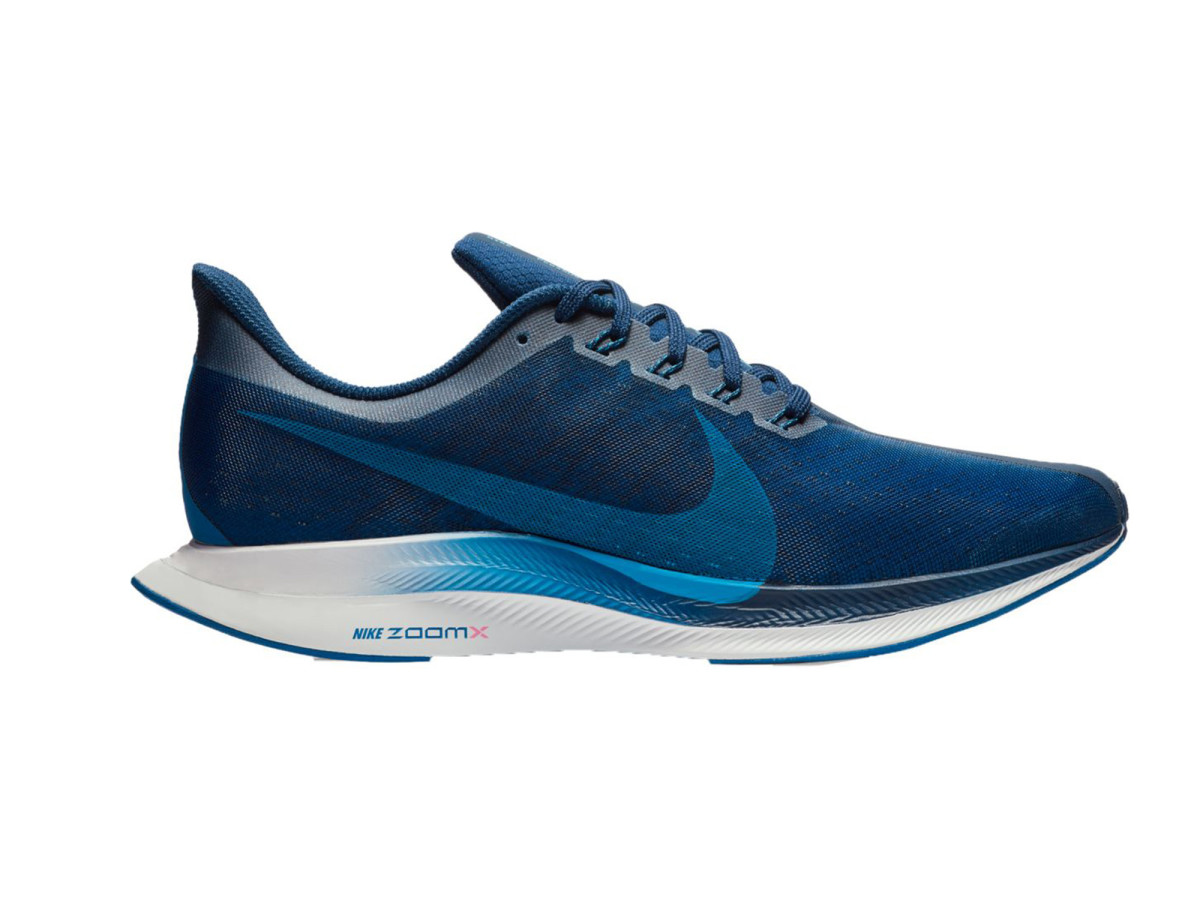
Best all-around, elite shoe; best for runners who prefer cushioning; good for longer workouts
Buy it: Nike, DICKS Sporting Goods, Foot Locker, Finish Line
Price: $180
Nike Air Zoom Pegasus 35
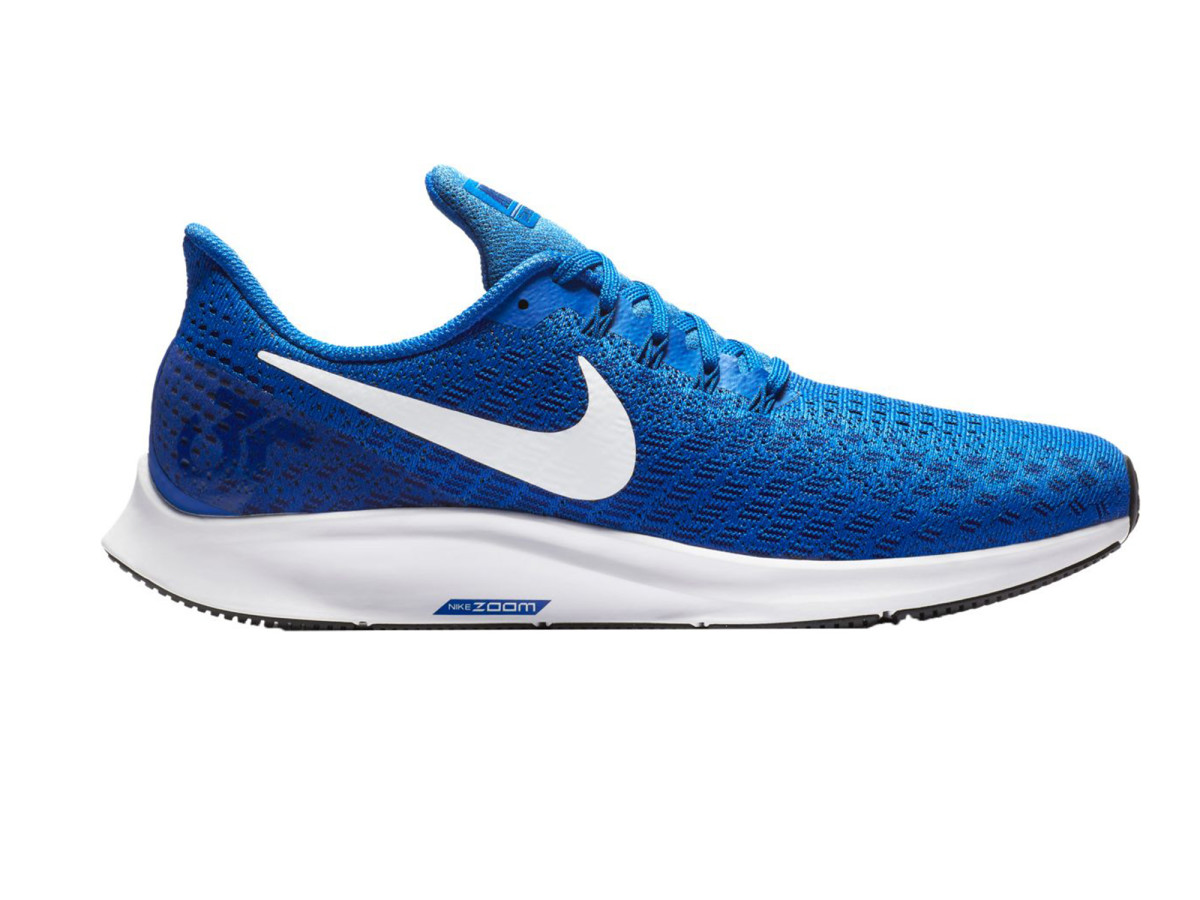
Best all-around shoe; best for mileage and durability and those looking for a lower price point than the Nike Zoom Pegasus Turbo (above)
Buy it: Nike, Zappos, DICKS Sporting Goods, Foot Locker
Price: $120
Nike’s Pegasus line has been a staple of their running collection for more than 35 years now, and it’s easy to see why the Air Zoom Pegasus is the brand’s best-selling running shoe. Meanwhile, the brand’s Vaporfly 4% Flyknit has become a favorite in recent years for its lightweight, form-fitting feel and penchant for going super-fast, in addition to the Epic React Flyknit 2’s foam cushioning. So what happens when you combine everything into one shoe?
You get the Nike Zoom Pegasus Turbo, which combines the look of the Pegasus 35’s silhouette, the VaporFly 4%’s midsole, the Epic React’s midsole and a mesh upper for a breathable, cushioned and bouncy ride.
When you put on these sneakers, the first thing you’ll notice is the fit: the mesh upper is very tight, yet still flexible, and it gives the shoe with a slightly different shape. I found it to fit true to size, but the midfoot area is a bit tighter than the regular Air Zoom Pegasus 35, another top choice—more on this shoe below. It took me less than a handful of runs to adjust to the fit, but it could be an issue for someone with a wider midfoot area, as I have an average arch and width.
While the top might be thin, it is protective in most conditions. I took the Zoom Pegasus Turbo out on some rainy, wet runs and found out that there is a piece fabric behind the mesh that keeps your foot from rubbing up against the shoe. The cushioning, made of Nike’s ZoomX foam, is the biggest benefit of the shoe and it’s tremendously comfortable. It also provides more stability and rebound with every step. Though Nike’s foam appears to be softer than to the BOOST technology used in adidas running shoes, it is not as long lasting and creases after use. The foam cushioning does have great shock absorption, which is great when you’re pounding the ground hard and fast, but it still gives that feeling underfoot that propels you forward on the road. The energy return and conservation is one of the advantages to this shoe.
One of the most polarizing features of the Nike Zoom Pegasus Turbo is the thick pink stripe across the front—you either hate it or you love it. There is no physical benefit to the stripe, so it’s just an aesthetic addition, but it certainly makes the shoe stand out, especially during races. Now available in various colorways, the shoe is slowly becoming popular as a lifestyle option as well.
I started testing the shoe in August while at the Hood to Coast Relay race from Portland to Seaside, Ore., and I was still wearing them through November. I used them for speed sessions on the track that varied in distance from 400-meter to 1,200-meter repeats. It’s a fairly lightweight shoe so definitely recommended for faster speed session but also could be a fit for races up to a half marathon. Unlike the VaporFly 4%, where its popularity tends to skew toward the more serious crowd of runners, the Pegasus Turbos are recommended for runners of all abilities.
That being said, it’s understandable that the $180 price point of the Zoom Pegasus Turbo is a concern for some runners—you should typically aim to get more than $1 per mile on your shoes. (It’s important to note that I found you can get anywhere from 200 to 250 miles on these shoes.) But there’s also another comparable option for less advanced runners who are looking to get more mileage out of their shoe.
The Nike Air Zoom Pegasus 35 is priced at a more reasonable $120, and although it does weigh a full ounce more than the Pegasus Turbo, it’s a good choice for those who are seeking a running shoe with more durability. The foam on the Air Zoom Pegasus 35 isn’t as soft, so it will last longer, but it still provides adequate cushioning and a springy feel underfoot.
While the Pegasus Turbos are designed for more elite runners, the Air Zoom Pegasus 35 is a perfect choice for runners at every level, whether you’re just getting started or training for yet another marathon. Bonus: these shoes are available in narrow, regular, wide and extra wide widths, truly making them a good fit for everyone. —C.C.
Adidas UltraBOOST 19
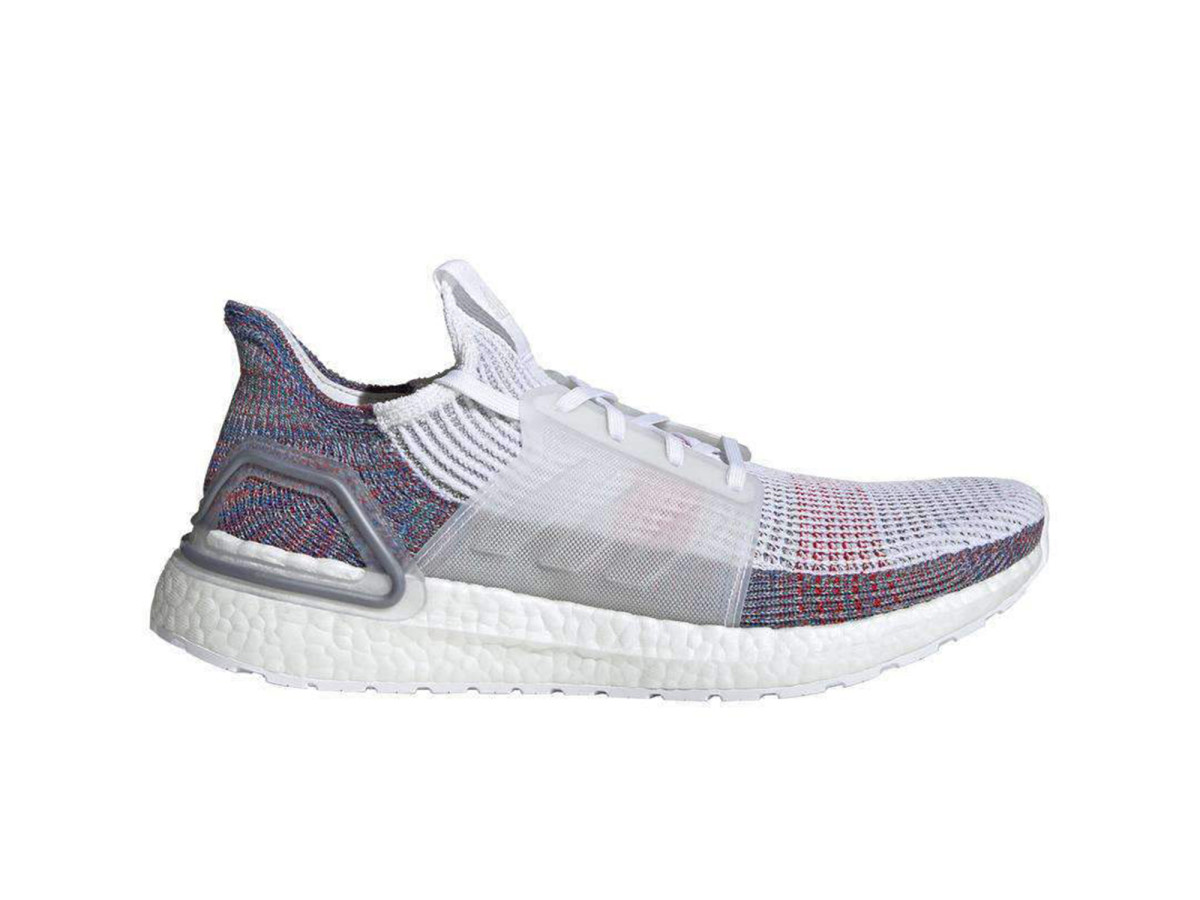
Best for: Runners who like cushioning; good for moderate-paced runs
Buy it: adidas (Feb. 13 release, alternate colorways available later in Feb. 2019)
Price: $180
After running a few marathons in the first iterations of UltraBOOST, I was interested to see what performance changes adidas has made to a shoe that has become a favorite for athletes, as well as hype beasts and sneakerheads as a lifestyle kick.
The new UltraBOOST 19 shoe has a different feel with their “PrimeKnit 360” upper that’s woven all across the top of the shoe. It takes a few runs for the shoe to get a good fit around your foot. The support on the heel is improved and adidas doesn’t stray away from the foam that has made it very popular with runners who prefer a more cushioned shoe. Because of this addition, I found it more of a fit for easy and moderately paced runs because it is heavier due to more BOOST foam at the base. This new edition of the shoe provides a firmer ride on those longer run distances. I have some teammates who have used the UltraBOOST to get back from injury because of the cushioning technology.
I went on a few runs in the rain with the shoes and its “less slip and more grip” improvements that worked in previous editions were still there due to the Continental Rubber used on the bottom. The outsole is very durable when compared to its competitor in the Nike Zoom Pegasus Turbo. There are little to no wear patterns visible on the outsole by the time that you hit anywhere from 50 to 100 miles with the shoes.
The UltraBOOST continues to improve as a running shoe and it’s definitely a solid choice. The $180 price point could prove to be a barrier for some, considering that it is high in comparison to other shoes in this area. But from a function and a fashion standpoint, you won’t be disappointed with these adidas running shoes.
ASICS GEL-Nimbus 21
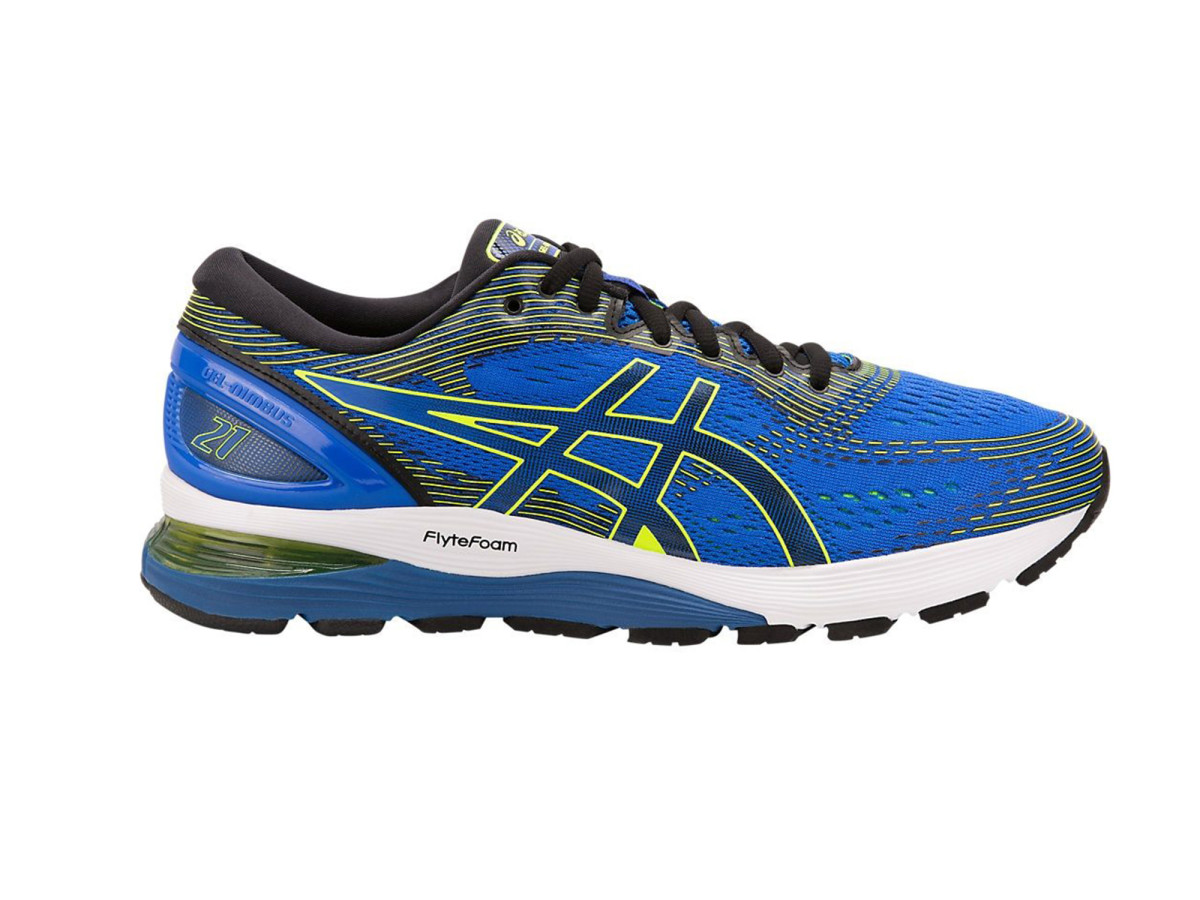
Best for: Long distance and recovery runs, neutral or under-pronators
Buy it: ASICS, Zappos, DICKS Sporting Goods, Foot Locker
Price: $150
Before testing out the GEL-Nimbus 21, I hadn’t run in a pair of ASICS running shoes in quite a few years. I didn’t know what exactly to expect—would they feel like the same shoes I wore in college?—but I am happy to report that the reunion was a good one.
Though they aren’t manufactured for speed, these shoes felt fast. As a runner who struggles to pace himself, especially early in runs and races, these ASICS running shoes provided more of the lighter, airier feel that I would expected out of track shoes. According to the tech specs, ASICS uses its FLYTEFOAM technology in the midsole to give “maximum bounce on the forefoot” to help propel you forward, and I definitely felt that while running. In my opinion, it felt like these shoes were designed for high energy return, which for me translated to speed while on the road. (If that wasn’t the goal, then my previous running shoes must be really clunky!)
While I tested the shoe in an urban environment—I live in Brooklyn and typically run a six-mile loop, three-plus on a paved loop around Prospect Park and 1.5 miles to the park and back home—I actually prefer running on trails. If you’re seeking a shoe capable of trail work—the traction design is clearly intended for use outside of road racing—then this is a really strong hybrid shoe. I’d happily use these in an urban half-marathon or marathon if I was seeking a personal record—they are clearly high-performance shoes designed to maximize speed in a distance setting. That being said, I can’t say for unsure how well or how long they’d maintain in a predominantly all-terrain/trail environment. But ASICS typically produces very complete, multi-purpose shoes that are capable of enduring varying environments, so I have little doubt that they’d withstand rigorous work in more rural or rocky settings. —G.B.
New Balance FreshFoam 1080s
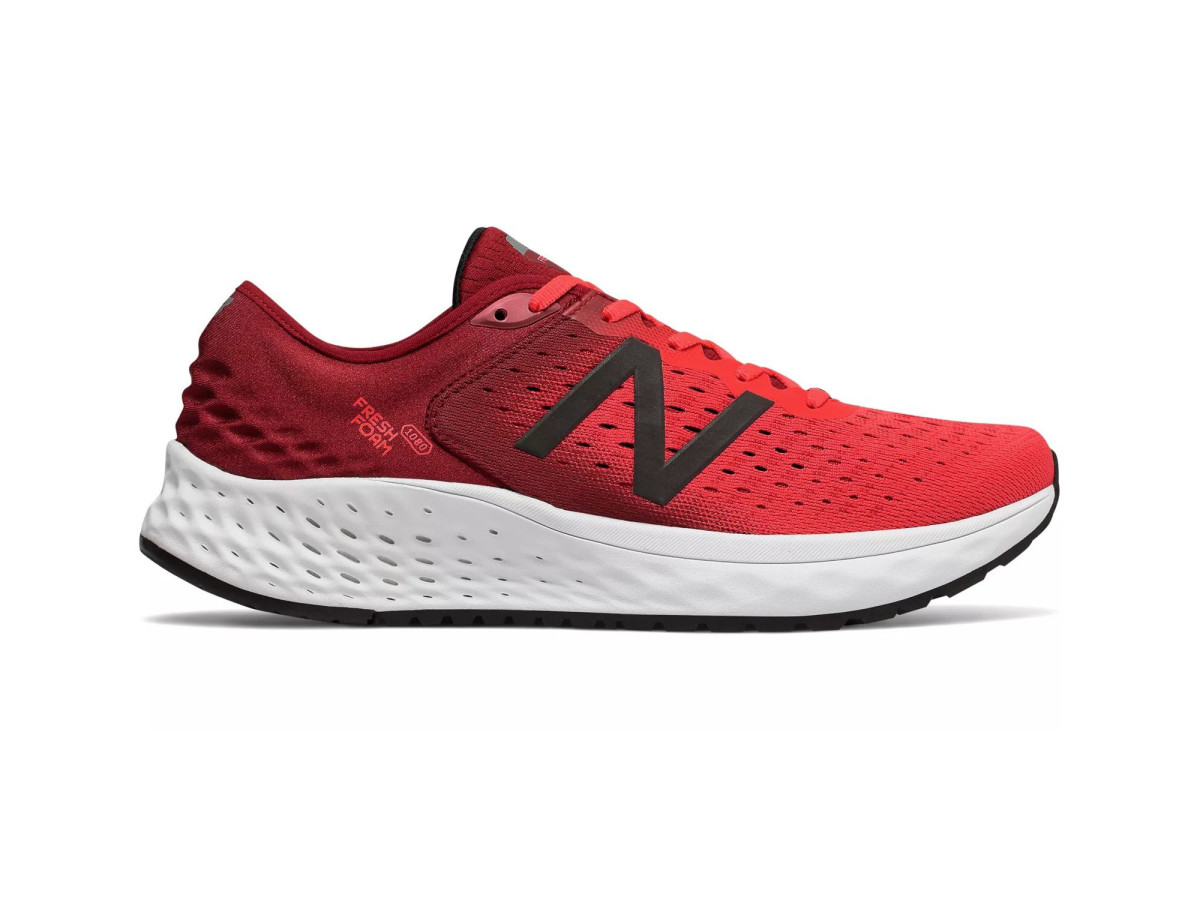
Best for: Cushioning lovers, middle distance runs, road running
Buy it: New Balance, Zappos, Foot Locker
Price: $150
If you’re a runner who craves that cushy feel underfoot, these are the shoes for you. The FreshFoam 1080s are as foam-filled as advertised—if you are not used to running with a very cushioned shoe, or even if you're replacing cushioned shoes you've worn down over a lot of miles, the amount of material under your feet might be a little distracting during your first few times out in them. After that adjustment period passes, you'll find that you've settled into a new normal and begin to feel the foam's benefits. I felt like I could run forever on these and the soles of my feet wouldn't be any worse for wear. They distribute the stress of a long run evenly throughout the foot.
Of course, the cushioning's effectiveness at absorbing impact cuts both ways if you're out for a long run: I was hoping to get back more energy from each stride, but I felt like I was sinking into the foam slightly and needed to do more work to keep up my pace.
I have very large and very finicky feet, and I’ve grown to prefer a little firmer heel support for maximum side-to-side stability than what New Balance typically offers. The Fresh Foam 1080s did wiggle loose in the back on my first few trial runs (in particular, I felt like I had to downshift before making tight turns and running down a ramp with some hairpin turns), and I don't think they'd be my first choice for trail running or curvy, uneven terrain. However, on subsequent long runs on asphalt I found that after the first 10K my heel settled into a comfortable spot where I was no longer worried about stability.
I wore the FreshFoam 1080s during part of my marathon training program, running predominantly on sidewalks and paths in mostly fair weather with a little moisture on limited occasion. The weight and the width of the sole scared me away from doing any speed work, especially agility exercises. —E.S.
Brooks Adrenaline GTS 19
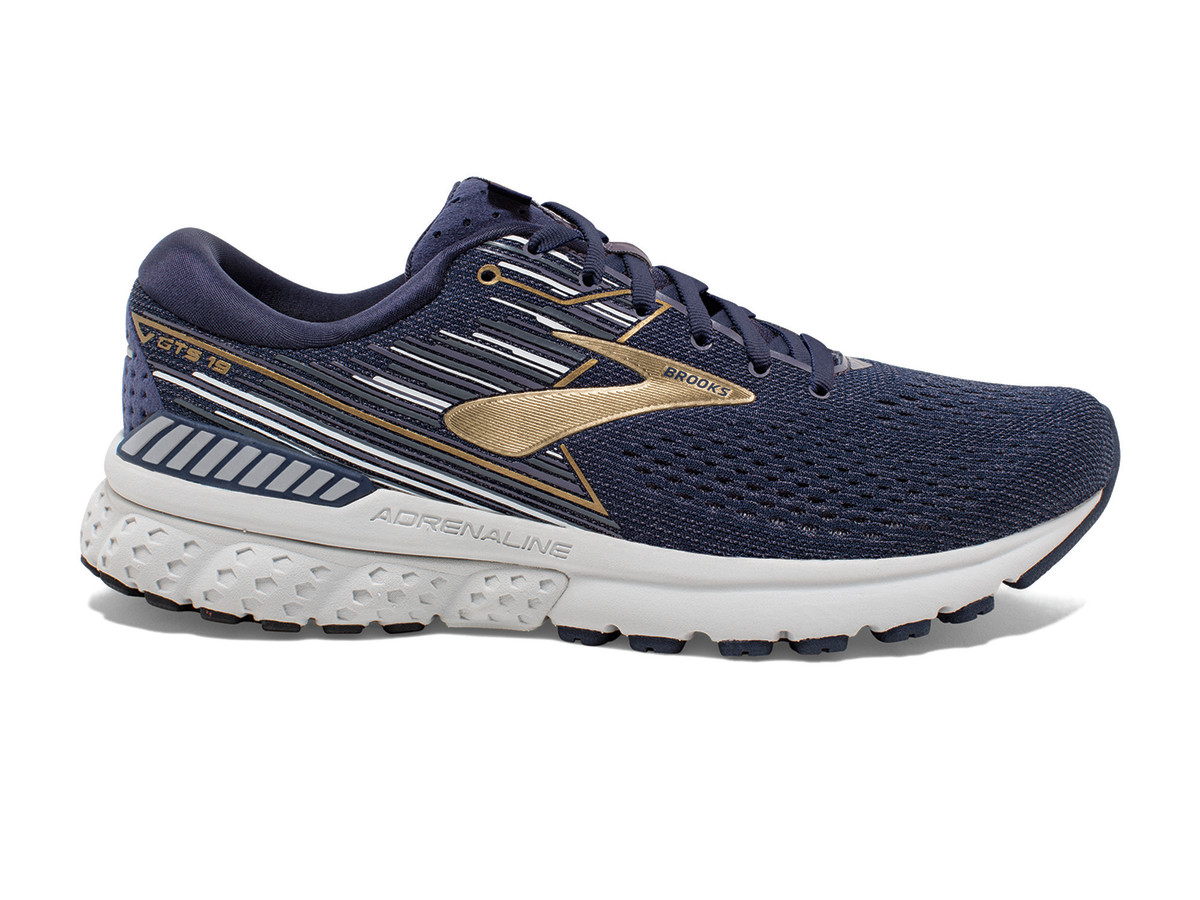
Best for: Stability, support, dependability, over-pronators
Buy it: Brooks, Zappos, DICKS Sporting Goods, Foot Locker
Price: $130
If you’re an over-pronator or simply looking for a stable support shoe, the Brooks Adrenaline GTS 19 is one of the top shoes for runners with these needs. Upon first glance out of the box and after taking them out for a ride, these shoes are beefy—but I don’t mean that as an indictment! They’re not built for speed or short bursts, but they’re highly dependable shoes with thick soles that are suitable for beginners as well as advanced runners. There’s significant ankle support and a deep cushion that provide a very comfortable running experience, especially for longer distances. Maybe the most appealing element of the Adrenaline GTS 19s is the home that they provide for your feet. Lighter shoes with less ankle support are plenty appealing because of the freedom they provide your feet, but the risk for ankle injury—especially among less experienced runners—is amplified.
I tested this shoe in a shorter, urban distance. Fort Greene Park in Brooklyn features three steep staircases that work well for strenuous interval training. I noted that these shoes are not ideal for sprinting—they’re not if you’re looking to set any personal records—but they still keep your feet comfortable and relaxed even under highly stressful circumstances. I made sure to push myself in the mile that it took to get to the park to sense how they’d feel in the faster portions of a distance race, and then during the stairs to gauge the stress on my foot. These aren’t going to be the shoes that you’ll use the 400 meters, but they are shoes that I would highly recommend for sustainability, dependability safety. I look forward to having these for long trail runs, for leisurely weekend runs and for significant training runs late into marathon preparation.
These shoes should work for pretty much any kind of foot. The amount of cushion and support that these provide mean that pretty much any person—beginner to expert—would feel comfortable in these. —G.B.
Nike Zoom Fly FlyKnit
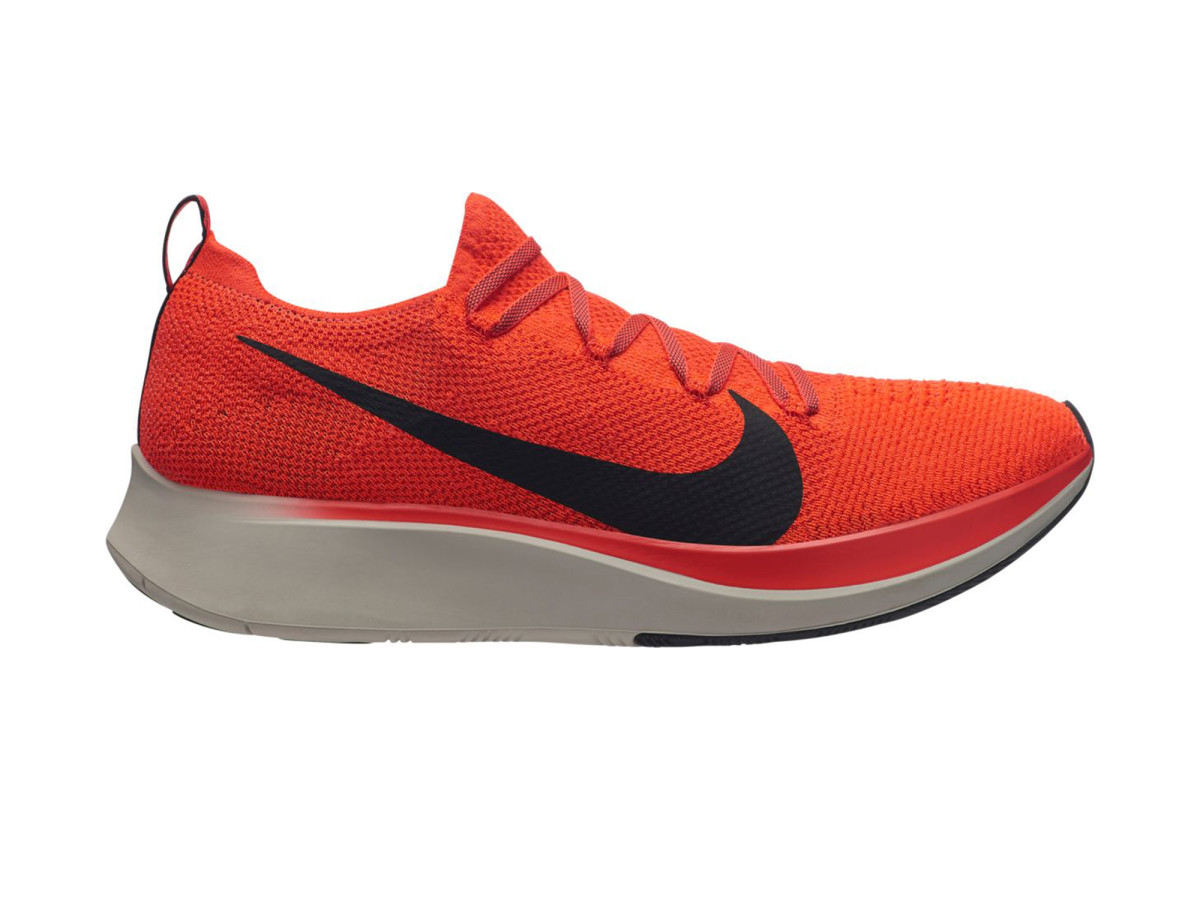
Best for: Tempo workouts, runners in search of a daily trainer
Buy it: Nike, Finish Line, DICKS Sporting Goods
Price: $160
This is the second edition of the popular Nike Zoom Fly racing shoe but this edition adds FlyKnit to the upper. While it’s the second in the Zoom Fly collection, there are several different features between the two shoes, but the Flyknit edition keeps the primary shape and geometry of the first version. The original shoe was comprised of a mesh upper that was thin and light; this version of the shoe gets even lighter at the top. I used the shoe during runs that were anywhere from seven to 13 miles and over time, the upper part starts to take the shape of your foot. The shoe fits true to size, but if you have a wider foot, the Zoom Fly Flyknit may not be the best fit for you.
The midsole of the shoe also saw some changes, with the addition of React foam and a carbon fiber plate. You get the spring that you would get from the Nike Vaporfly 4% shoes. That’s important because if you’re a serious runner who wants to race the 4% shoes but doesn’t want to burn out the mileage on them, the Zoom Fly FlyKnit provides the closest hybrid between a trainer and a race day shoe.
The midsole changes are beneficial for the overall feeling of the shoe when you put it on. The stiffness isn’t as detectable because of the plate and if you’re looking to run fast in them, it’s an upgrade performance-wise—even if they’re just slightly heavier than the previous shoe. The durability of these shoes was never an issue, as I was able to use them for several long runs while also feel comfortable doing shorter, quicker strides in them. These Nike running shoes are heavier on the bottom but not uncomfortably or noticeably heavy. I highly recommend this shoe for tempo workouts or runs that require quicker turnover.
OUR EXPERTS
Once a high school sprinter and now a seasoned marathoner, Chris Chavez has run eight marathons including five of the six World Marathon Majors. His next major race will be the 2019 Tokyo Marathon. He trains with the Brooklyn Track Club in New York City, which means countless laps on the East River Park track and Central Park bridle loops. When he’s not out running, he’s probably writing about running for SI.com. In the last four years, Gabriel Baumgaertner has run five half-marathons, one marathon and several short-distance races. Raised in the canyons of southern California before relocating to the hills of the Bay Area, Baumgaertner enjoys the wilderness more than road racing, but has learned the nuances and emotional fortitude required to pound pavement. When he’s not running, there’s a strong chance he’s watching baseball. A hurdler on his high school track team, Eric Single has been training for his first marathon along the Hudson River Greenway and in Central Park, and he has run two half marathons and countless 5K and 10K races in the last five years. When it’s too cold to run, he plays hockey and basketball.
Full disclosure on our experts’ foot sizes and types: Chavez wears a men’s size 10 and has an average arch and width. Baumgaertner wears a men’s size 9.5 and has a slightly wider than average foot, so narrow sprinting shoes typically don’t work well for him. For the tall men in search of running shoes, you’ll be happy to know that Single is a regular men’s size 15.
THE TESTING METHOD
Chavez, Baumgaertner and Single tested out each of these sneakers in a range of running settings, including easy-paced runs, mid-range miles and longer distances in line with a marathon training program. They were tested during runs on the streets of Manhattan and Brooklyn; and in parks around New York City; on treadmills, trails and track surfaces. They were also worn for general day-to-day wear and on walks to the gym.
